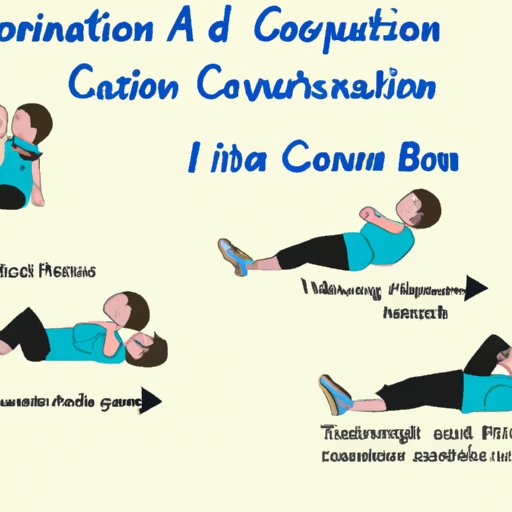Introduction
A cesarean section (C-section) is a type of surgery used to deliver a baby through the mother’s abdomen. While this is an important and life-saving procedure in some cases, it does come with its own unique set of challenges during recovery. One of the most common questions that new mothers have is when they can safely resume exercising after their C-section. In this article, we will explore the benefits of exercising after a C-section, how to start exercising safely, common types of exercise post-C-section, tips for recovering from a C-section and exercising, and expert advice on when to resume exercise after a C-section.
How to Start Exercising Safely After a C-Section
Before jumping into any type of physical activity, it is important to speak to your doctor or healthcare provider to make sure it is safe for you to do so. Your doctor will likely advise you not to start exercising until at least 6 weeks post-surgery. It is also important to consider your fitness level before starting any type of exercise program. If you were inactive before your pregnancy, then it might be a good idea to start with low-impact exercises such as walking or swimming. If you were active before your pregnancy, then you may be able to start with more intense exercises such as running or weight training.
Once you have received the okay from your doctor and assessed your fitness level, it is important to start slow and build up gradually. This will give your body time to adjust to the added stress of exercise and prevent injury. It is also important to listen to your body and take breaks when needed. You may need more rest than usual during the first few weeks of your recovery, and it is important to honor those needs.
Common Types of Exercise Post-C-Section
Once you are cleared to start exercising, there are a variety of activities that you can do to get back into shape. Walking is one of the best forms of exercise post-C-section because it is low-impact and gentle on the body. Swimming is another great option because it takes the pressure off of your joints and is easy on your abdominal muscles. Pilates and yoga are also great options for new moms, as they focus on strengthening the core and improving flexibility. Low-impact cardio such as cycling or elliptical machines are also great options for getting your heart rate up without putting too much strain on your body.
Tips for Recovering from a C-Section and Exercising
In addition to listening to your body and taking breaks when needed, there are a few other tips that can help you recover from your C-section and get back into exercising safely. Wearing supportive garments such as a maternity belt or compression shorts can help provide extra support to your abdominal muscles. Taking warm baths or using a heating pad can also help ease any soreness or tension in your abdominal muscles. Finally, make sure to eat a healthy diet and drink plenty of water to stay hydrated and keep your energy levels up.
Expert Advice on When to Resume Exercise After a C-Section
According to the American College of Obstetricians and Gynecologists (ACOG), women should wait at least six weeks after a C-section before returning to any type of exercise. However, this timeline can vary depending on the individual and the circumstances surrounding their delivery. Generally, women who had a vaginal delivery can return to exercise sooner than women who had a C-section. The ACOG guidelines recommend that women start with low-impact activities such as walking and progress to more vigorous activities as tolerated.
It is important to remember that recovery from a C-section is a gradual process. During the first few weeks of recovery, it is normal to experience pain and discomfort in the abdominal area. As you continue to heal, you may find that your energy levels increase and that you are able to do more strenuous activities. It is important to listen to your body and take it slow. If you experience any pain or discomfort, stop immediately and consult your doctor.
Women who have had a C-section should also seek professional guidance when returning to exercise. A physical therapist or personal trainer can help create an individualized exercise plan based on your fitness level and goals. They can also provide helpful tips and advice on how to safely return to exercise after your C-section.
Conclusion
Exercising after a C-section can be beneficial for both physical and mental health. Not only can it help improve strength and flexibility, but it can also help reduce stress and boost mood. Before starting any type of exercise program, it is important to check with your doctor and assess your fitness level. Once you have been cleared to start exercising, it is important to start slow and build up gradually. Common types of exercise post-C-section include walking, swimming, pilates, yoga, and low-impact cardio. It is also important to wear appropriate supportive garments, listen to your body, and take breaks when needed. The American College of Obstetricians and Gynecologists recommends waiting at least six weeks before returning to exercise post-C-section. Women should also seek professional guidance when returning to exercise to ensure they are doing it safely and effectively.


